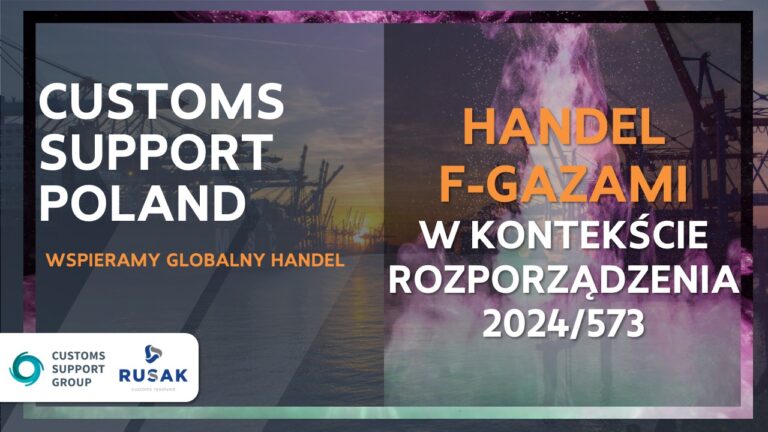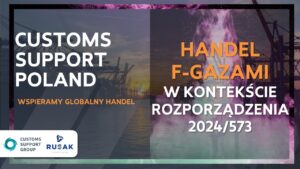💥💥💥 Our webinar last week, focused on changes in customs regulations, attracted a great deal of interest, sparked and engaging discussion, and generated many interesting questions. One of the key topics covered was 👉 the overview of the most important changes in regulations regarding the trade of F-gases.
ℹ️ The new European Parliament Regulation 2024/573 on fluorinated greenhouse gases (F-gases) introduces significant changes for companies and individuals dealing with refrigerant substances. The main changes relate to the phasing out and restrictions on the use of HFCs, which are commonly used in refrigeration equipment.
ℹ️ At the national level, laws will be introduced to adapt to Regulation 2024/573 and Directive 2024/120. The new regulations will include, among other things, penalties for illegal trade of refrigerant substances containing F-gases.
🆕 Key elements of the new EU Regulation: ✅ Expanding the definition of F-gases ➡ The new regulations will cover not only HFCs, PFCs, and SF6 but also other fluorinated gases listed in the annexes to the regulation. ✅ Stricter HFC reduction schedule ➡ Between 2025 and 2029, the amount of HFCs allowed on the market will be gradually reduced, with a complete ban on their introduction by 2050. ✅ Tougher requirements for importers and exporters ➡ New, stricter requirements for the registration of companies trading in F-gases will be introduced. For instance, new importers will need to demonstrate 3 years of experience in chemical trade or equipment servicing to obtain the right to trade HFCs. They will not be allowed to transfer their HFC quota to other entities, and each importer must be registered at only one address. ✅ Quota system implementation ➡ Companies will be required to have quotas for importing HFCs and will pay a fee of €3 per ton of CO2 equivalent when importing HFCs from outside the EU. ✅ Certification and import control ➡ The introduction of the CERTEX (Single Window) system will allow customs authorities to track every import, export, or transit of F-gases within the EU. Additionally, specific border crossings will be designated for the entry and exit of F-gases to and from the EU. ✅ Ban on single-use containers ➡ The regulation bans the placing of F-gases on the EU market in single-use containers and the storage and transport of such containers. It also mandates the labeling of F-gas containers both when placed on the market and during intra-EU sales.
🗣 The new regulations provide for severe penalties for illegal HFC trade and introduce mechanisms for cooperation between customs authorities, environmental protection agencies, and other institutions. While the regulation aims to protect the environment, the changes may also lead to an increase in illegal F-gas trade, particularly in Poland.
‼️ Businesses dealing with fluorinated greenhouse gases should be aware of these new obligations to avoid legal and financial issues.

